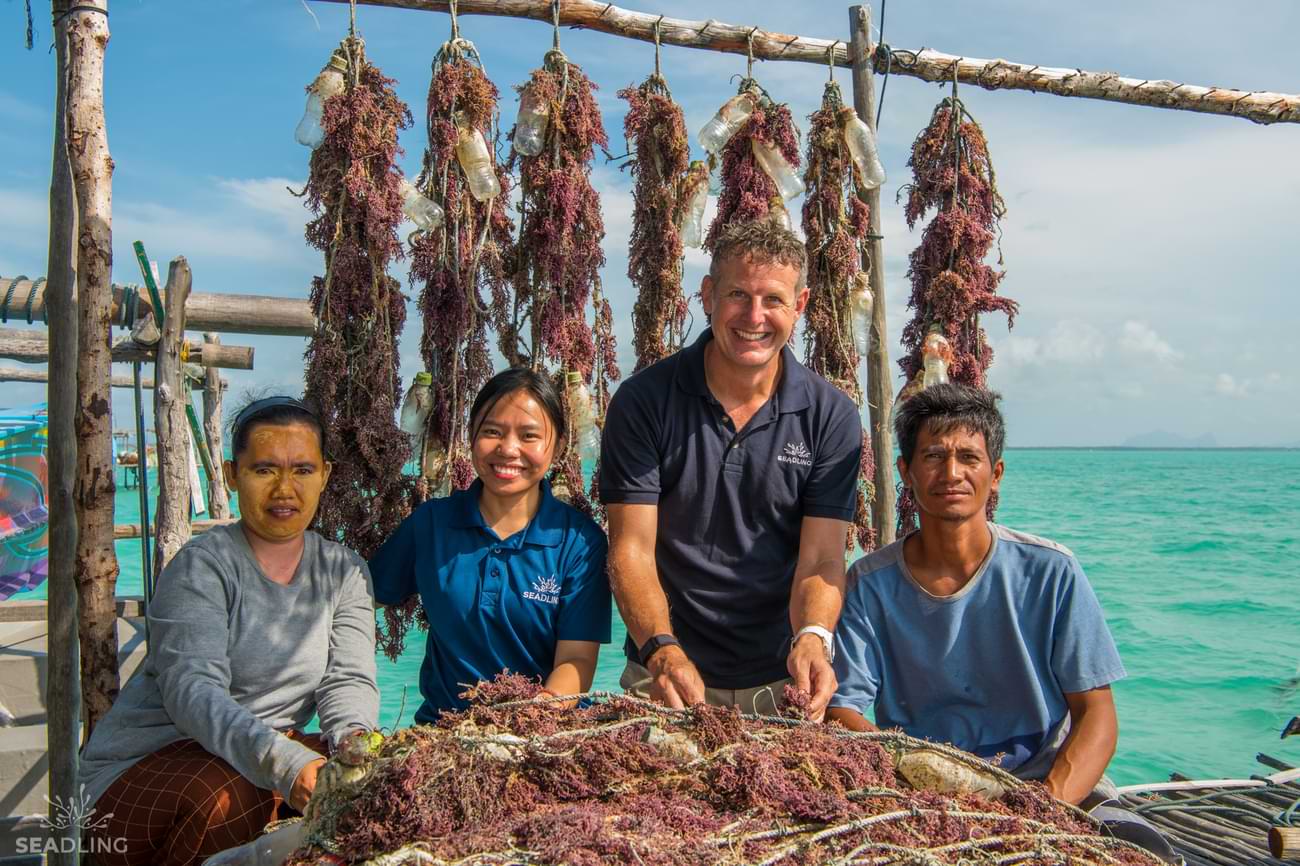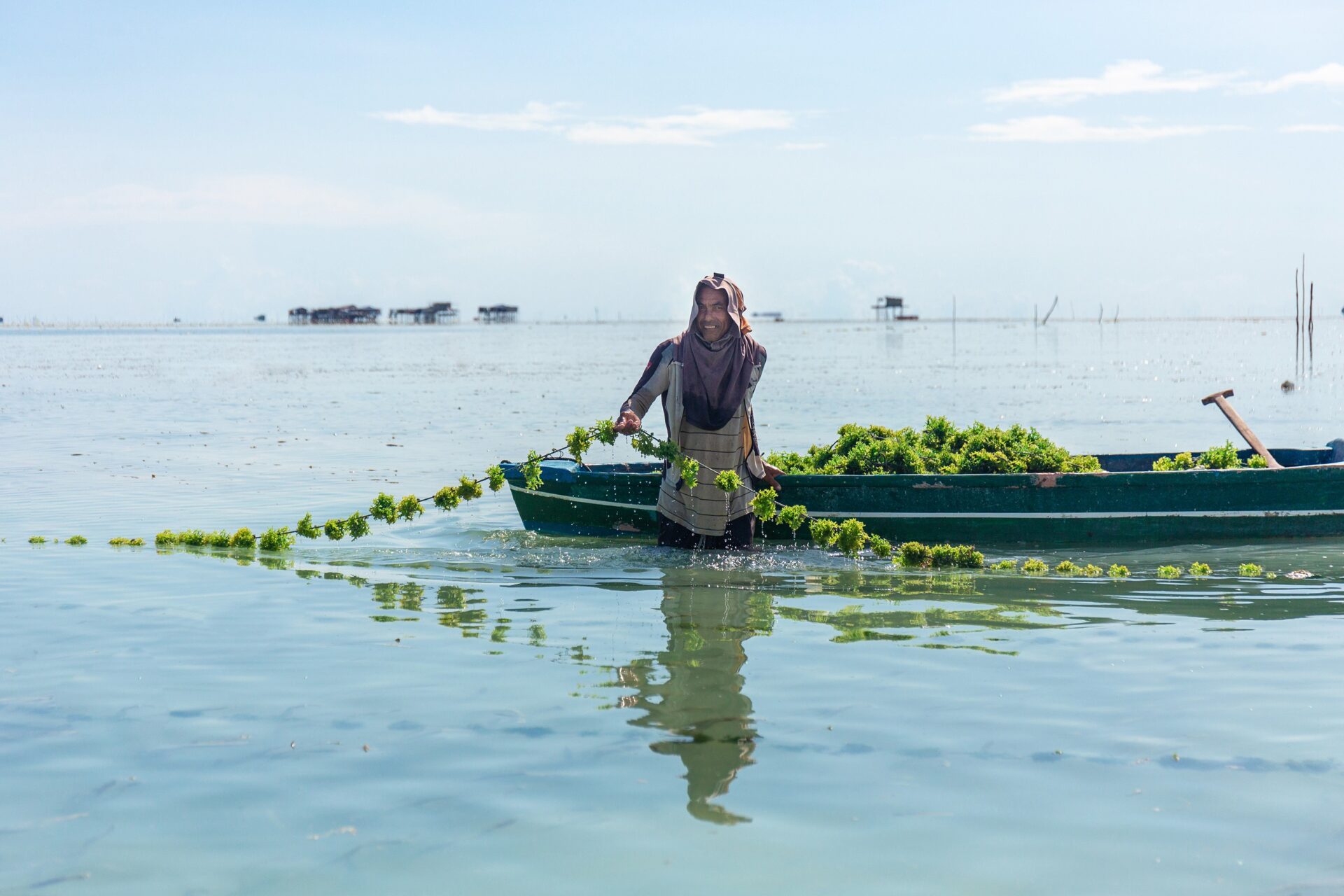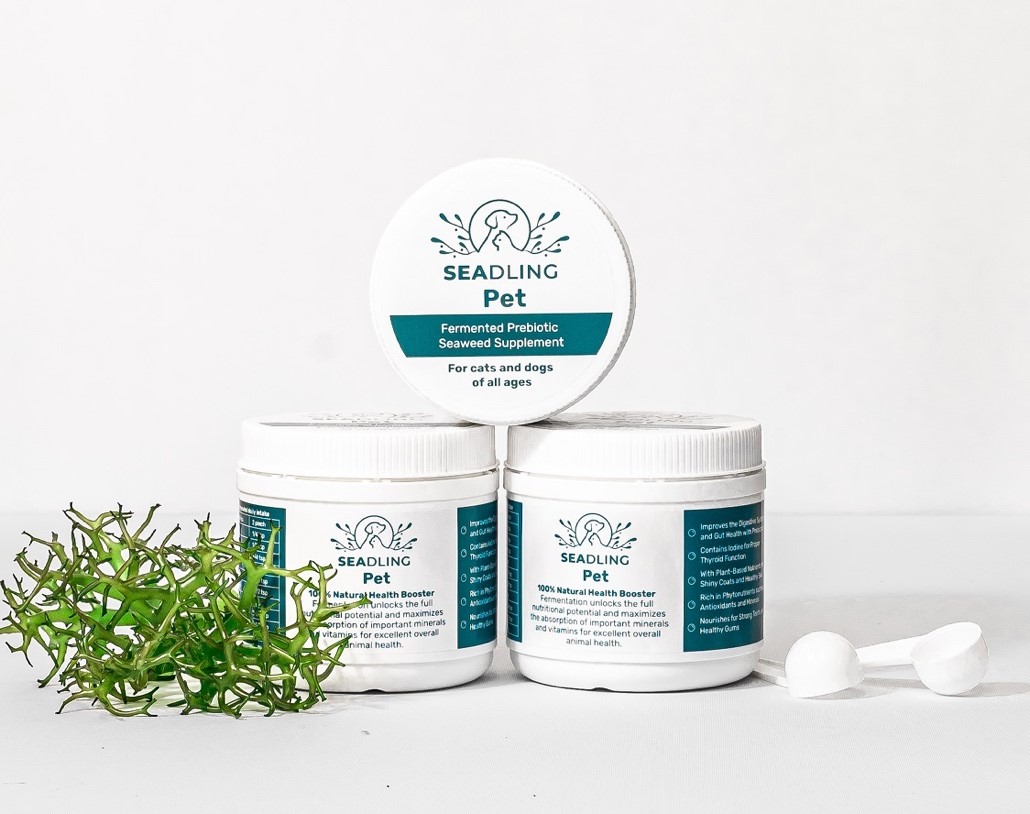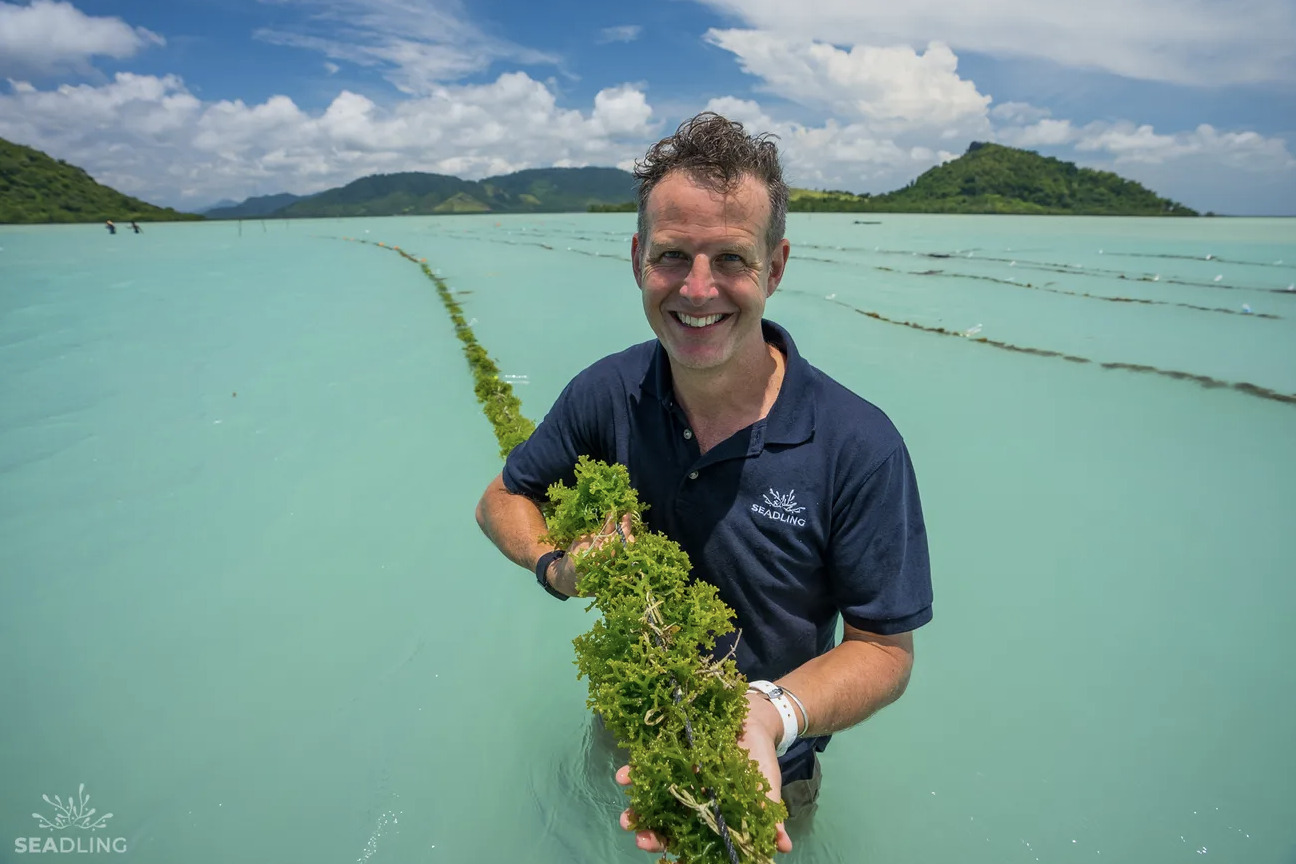[Disclosure: AgFunderNews’ parent company AgFunder is an investor in Seadling.]
For Simon Davis, launching a biotech startup first involved six years of sailing around the Pacific ocean.
Having left the chiropractic field he’d worked in for many years in Jakarta, Indonesia, Davis set out on what was supposed to be a two-year trip unrelated to any work. During the course of it, he witnessed the destruction of the oceans — pollution, overfishing, plastic pollution — and the impact of that on local communities.
“Seeing the link between communities and environment, I decided to start a little community project in Indonesia. Then I encountered seaweed and was like, ‘This is perfect because it’s sustainable, creates jobs for women, and is healthy food.’ Then I started reading into it, and it just blew my mind. This was not a little community project. This was agriculture on the ocean.”
He founded seaweed biotech company Seadling in 2018 to develop more restorative ways of farming seaweed while also making it more productive, creating jobs and providing functional ingredients to the agrifood value chain.

Stone-age technology in a billion-dollar industry
Seaweed is a billion-dollar industry just in Malaysia, Indonesia and Philippines, but a tough one to access, Davis tells AgFunderNews. Seaweed farms are usually located in remote places where language is a barrier and communities are slow to embrace change.
Davis had the advantage of being fluent in both Indonesian and Malay, and spent two years visiting seaweed farms.
“I would go to a community and live with them for a few days or a week, and sit around with the farmers and talk about what works and doesn’t work. Who buys [the seaweed], who they sell it to. [I did that] that all over Indonesia and the Philippines, went to Malaysia and Sri Lanka, went to India.”
There are more than 12,000 species of seaweed, each with its own nutritional profile and bioactive compounds, he says.
“Seaweed is highly, highly nutritious and full of these bioactive compounds because [it] grows in adverse conditions. Compared to other things, I would say there’s also a lot of diversity.”
Around 98% of all global seaweed farming takes place in East and Southeast Asia. However, climate change is creating shorter growing cycles and warmer ocean temperatures that are decreasing yields.
“The plants are adapted to a certain range of temperatures,” explains Davis. “If the ocean changes even one degree on average, the current crops won’t grow.”
According to a 2023 report from the World Bank, “Seaweed farming in Asia is almost entirely reliant on human labor,” yet the industry grapples with labor shortages and poor efficiency that’s “primarily restrained by the lack of good-quality seed supply.”
Davis has a simpler way of stating it: “They’re using Stone Age technology.”
“There are hundreds of thousands of these farmers, they have their own rights to the water, they’ve been farming for generations. If we can get seed material that grows faster — and we’ve got varieties which grow two to three times faster than [via traditional methods] — the improvement we can leverage is massive. We can really create tremendous productivity gains.”
Currently working with small pet food manufacturers in Southeast Asia, Seadling has ambitions in the future to provide functional seaweed-based ingredients for human consumption.

How Seadling works
Seadling, which is registered in Singapore and operates out of Malaysia, uses proprietary hatchery technology and fermentation processes to increase the production of oligosaccharides and Vitamin K-2 in the Kappaphycus seaweed species. The process boosts the seaweed’s prebiotic qualities that can improve digestive health by regulating gut microbiota. Seadling currently has a patent pending for its fermentation and engineering processes.
The company says its fermentation process increases oligosaccharide yield by 345% compared to non-fermented processes.
Since Seadling is vertically integrated, it works directly with seaweed farmers in Borneo to source the raw materials.
Seadling is also piloting a program in which it distributes seedlings of its own proprietary strains to farmers to help them improve yields and productivity of plants. Those plants are then sent back to Seadling to undergo the fermentation process and become functional ingredients.
“We’ve got data showing that certain varieties will perform best in certain seasons in certain locations,” explains Davis. “So for example, we can come to a farmer and say, ‘Plant this for the next six months,’ and then come back and say, ‘Now plant this’.”

Nutrition meets function for pet food
The World Bank calls the pet food category one of the most promising short-term (before 2025) markets for seaweed thanks to its competitive pricing, low processing complexity and relative ease when it comes to scaling.
Pet food companies, many of which include seafood in their products, are also keen to leverage projects and narratives around ocean sustainability right now, says Davis. Mars, for example, has operated a coral reef ecosystem restoration program since 2011 as part of its Sustainable in a Generation plan.
For pet food, Seadling’s PhycoBio product has a few different benefits, including improving the quality of animals’ skin and coats and strengthening dental health thanks to Vitamin K2, which regulations protein carboxylation for bone health.
From a functional perspective, the product has natural binding capabilities that are very attractive to pet food companies right now, says Davis. “They’re already using binders that might be chemically synthesized; the trend in the industry is to move towards natural binders.”
He stresses that raw seaweed has been an ingredient in pet food for years. “What we’re doing is using technology to enhance, extract this amazing raw material to make targeted, functional ingredients.”
Seadling has partnerships to develop products with Nestlé, Mars, and Thai Union, and expects to go to market with some of these in the next couple of years.
Scalability ‘anywhere in the world’
Davis calls pet food “a great entryway” into other areas of agrifood. “We’re developing all these ingredients for cats and dogs, but we can apply those same ingredients to other animal groups and to humans. Especially when we’re dealing with big companies like Nestlé and Mars, which also have human food divisions, once we get in [with those companies] with pet food, we can just branch out.”
Seadling raised an undisclosed round of funding from AgFunder’s GROW Impact Accelerator in 2021. AgFunder made a follow-on investment into the company last year.
Seadling chose Malaysia as its operating base because of the technology and universities close at hand, says Davis.
“We’ll be here for the next two years, then expanding to Indonesia, where there are massive amounts of farmers and we can scale really, really quickly.”
He says the scalable aspect of Seadling’s business is one of the company’s key differentiators. “We’re developing a system we can take to any established seaweed farming community anywhere in the world and improve their productivity.”




